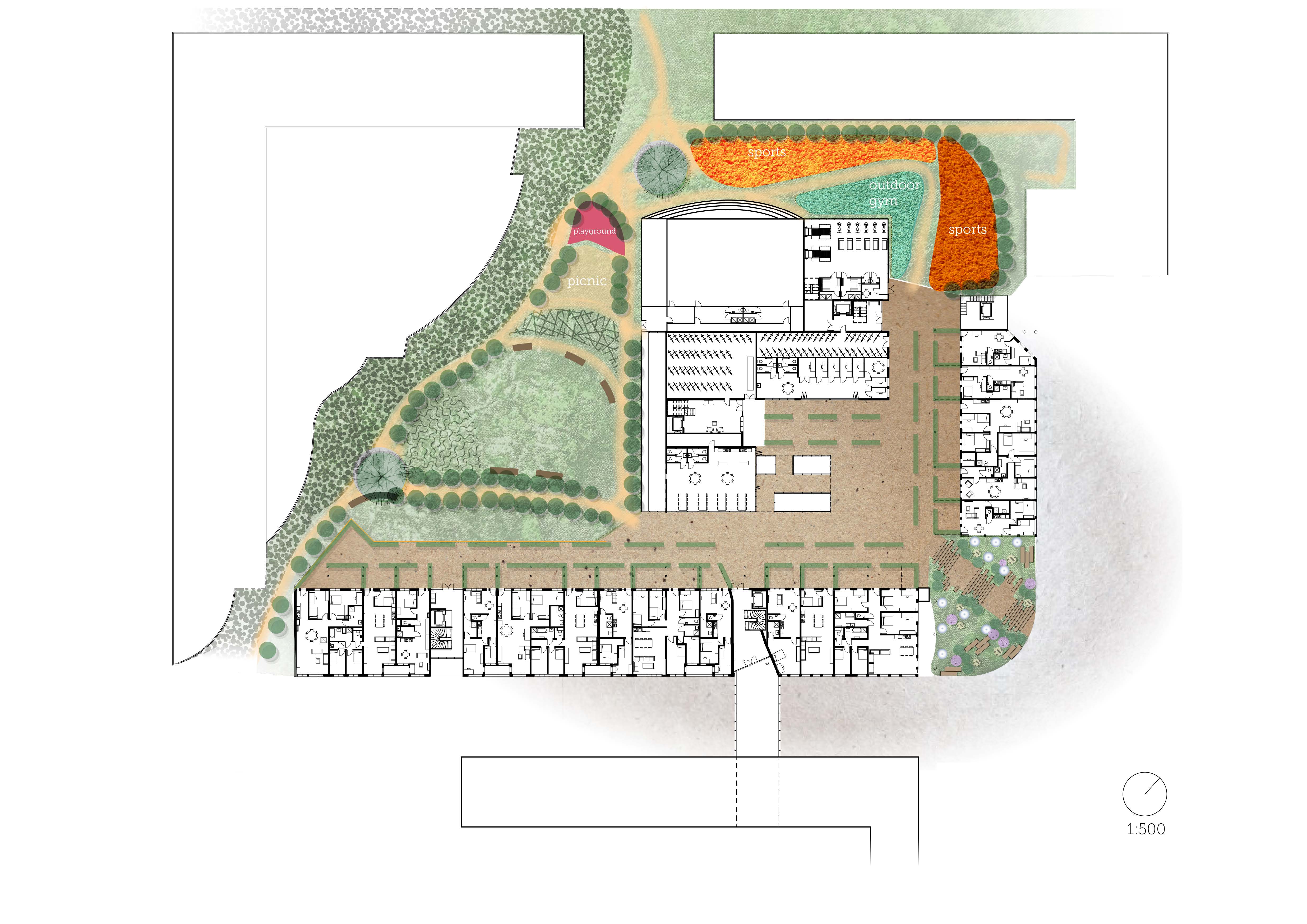Aging (in) Architecture
Suitable housing and its availability: it seems to be a problem within almost every phase of the housing career in the Netherlands, as the housing market is stagnating. Our older generation is held responsible for this national problem, but why? Deliberate occupation of the ‘oversized’ family home would be the easiest conclusion, but puts a heavy weight on this part of society. If these empty-nesters are not relocating, as is apparently expected of them for having an abundance of living space, what does this say about their preferences of the living environment? Listening to this generation for the sake of letting this operation of flow in the housing market succeed, is of utmost importance and priority. Instead of creating living environments focused on one generation or target group, the task within this research is to find a way to design inclusive and accessible living environments. Thereby, stagnation could be avoided in the future by this particular cause. After all, a mixture of different generations in the living environment is preferred both by older residents as by the general population. Within this task for diversification of the living environment for the sake of inclusivity, lies a hidden gem: a catalyst for the renovation task. By 2030, insulation of existing dwellings becomes mandatory in Europe for the sake of a climate-neutral society by 2050. When revitalizing existing living environments by means of inclusivity and quality, the climate task could fit perfectly within this picture. Especially these existing living environments are a very important subject, as with this renovation task the Dutch built environment could and probably will visually change tremendously in the upcoming decades. Therefore, the valuation by stakeholders of the current appearance and functioning of living environments up for renovation, are important in the face of physical and emotional heritage. As a large percentage of the Dutch housing stock will be insulated in the upcoming 30 years, these values are of great importance to prevent any loss of potential heritage. Enlarging the lifespan of these living environments by diversification, inclusivity and a high quality of living can therefore be achieved, as is the case for the renovation design of Bijlmerplein, an urban, residential center in Amsterdam. It turns out that it does pay off to take into account stakeholder valuations instead of wrapping the building in a blanket, because renovation can be revitalization rather than insulation.
Bekijk het hele artikel hier.
